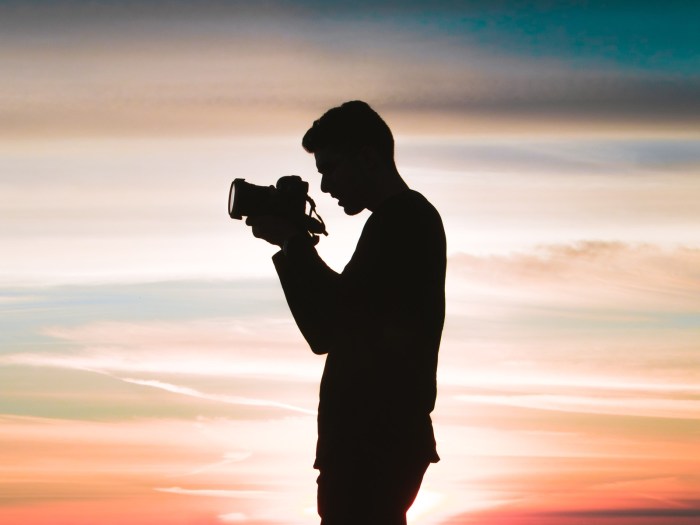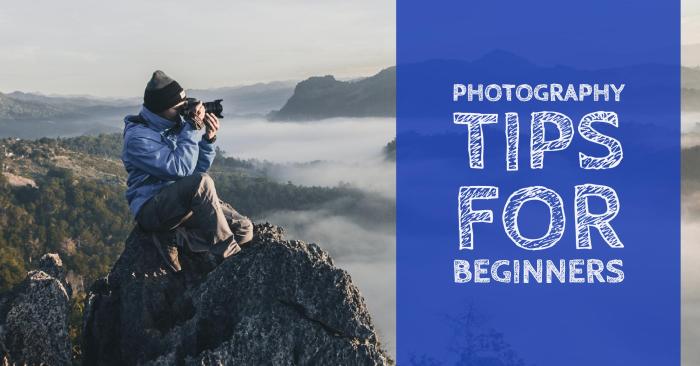Photography Tips for Beginners sets the stage for novice shutterbugs to level up their skills and unleash their creativity behind the lens with style.
From mastering camera basics to understanding composition techniques, this guide is your ticket to capturing stunning shots.
Introduction to Photography Tips for Beginners
Photography is a popular hobby and profession that requires constant learning and improvement. For beginners, understanding photography tips is crucial to enhance their skills and take their photos to the next level.
By following photography tips for beginners, novice photographers can learn essential techniques, composition rules, and camera settings that will help them capture stunning images. These tips can provide guidance on lighting, framing, editing, and other aspects of photography, allowing beginners to develop their style and creativity.
Benefits of Following Photography Tips for Beginners
- Improves technical skills: Photography tips can teach beginners how to use their cameras effectively, adjust settings, and experiment with different techniques to achieve desired results.
- Enhances creativity: Learning new photography tips can inspire beginners to think outside the box, try new angles, perspectives, and compositions, leading to more unique and captivating images.
- Builds confidence: By mastering photography tips and seeing improvements in their work, beginners can boost their confidence and motivation to continue learning and growing as photographers.
- Creates a strong foundation: Following photography tips for beginners helps establish a solid foundation of knowledge and skills that can be expanded upon as photographers progress in their journey.
Understanding Camera Basics
As a beginner in photography, it is crucial to understand the basic settings of your camera to capture stunning shots. Mastering camera basics like aperture, shutter speed, and ISO can greatly enhance your photography skills and unleash your creativity.
Essential Camera Settings
- Aperture: This setting controls the size of the opening in the lens through which light enters the camera. A lower f-stop number (e.g., f/2.8) results in a larger aperture, allowing more light to enter and creating a shallow depth of field. On the other hand, a higher f-stop number (e.g., f/16) means a smaller aperture, resulting in a greater depth of field.
- Shutter Speed: Shutter speed determines how long the camera’s shutter remains open to capture light. A fast shutter speed (e.g., 1/1000) freezes motion, while a slow shutter speed (e.g., 1/30) creates motion blur. Understanding shutter speed is essential for capturing action shots or long exposure photos.
- ISO: ISO measures the camera sensor’s sensitivity to light. A lower ISO (e.g., 100) is ideal for bright conditions, while a higher ISO (e.g., 1600) is suitable for low-light situations. However, higher ISO settings may introduce noise or grain to your photos.
Significance of Camera Basics
Mastering camera basics allows you to have more control over your photography, resulting in better image quality and creative expression. Understanding how aperture, shutter speed, and ISO work together can help you achieve the desired exposure and effects in your photos. By experimenting with these settings, you can unleash your artistic vision and capture stunning images that stand out.
Composition Techniques

In photography, composition is key to creating visually appealing images. By using different techniques, photographers can guide the viewer’s eye and create a sense of balance and interest in their photos.
The rule of thirds is a fundamental composition technique where the image is divided into nine equal parts with two horizontal and two vertical lines. The main subject is then placed along these lines or at the points where they intersect. This technique helps create a more dynamic and visually interesting composition compared to placing the subject in the center of the frame.
Rule of Thirds and Impact
- By following the rule of thirds, photographers can create a sense of balance and harmony in their photos.
- Placing the main subject off-center can draw the viewer’s eye into the image and create a more engaging composition.
- Using the rule of thirds can also help photographers create a sense of movement or flow within their images.
Framing and Leading Lines
- Framing involves using elements in the scene to frame the main subject, drawing attention to it and creating a sense of depth in the image.
- Leading lines are lines within the image that lead the viewer’s eye towards the main subject, creating a sense of direction and movement.
- Combining framing and leading lines can help create a strong composition that guides the viewer’s eye through the image.
Elevating Beginner Photography
- Understanding and applying composition techniques like the rule of thirds, framing, and leading lines can elevate a beginner’s photography by adding visual interest and impact to their images.
- By practicing these techniques, beginners can start to create more compelling and professional-looking photos that capture the viewer’s attention.
- Composition plays a crucial role in photography, and mastering these techniques can help beginners take their photography to the next level.
Lighting Tips for Beginners
Understanding how to work with light is crucial for capturing great photographs. Whether you’re using natural light or artificial lighting, knowing how to utilize it effectively can make a significant difference in your images.
The Importance of Natural Light
Natural light can create stunning effects in your photos. The best times to shoot with natural light are during the golden hours, which occur shortly after sunrise and before sunset. This soft, warm light can add depth and dimension to your images.
Using Artificial Lighting Indoors, Photography Tips for Beginners
When shooting indoors, artificial lighting becomes essential. Make sure to adjust the intensity and direction of the light source to avoid harsh shadows. Experiment with different types of lighting setups to achieve the desired mood in your photos.
Handling Challenging Lighting Situations
As a beginner photographer, you may encounter challenging lighting situations such as backlighting or low light conditions. To overcome these challenges, consider using reflectors to bounce light back onto your subject or increasing your camera’s ISO setting to capture more light.
Subject Selection and Storytelling

Choosing the right subject and telling a compelling story through your images are essential skills for beginner photographers. Let’s dive into how subject selection and storytelling can enhance your photography.
Selecting Compelling Subjects
When choosing a subject for your photograph, consider what catches your eye and sparks your interest. Look for unique angles, textures, colors, or patterns that stand out to you. Experiment with different subjects to see what resonates with you the most.
Significance of Storytelling
Storytelling in photography is about capturing a moment or conveying an emotion through your images. Think about the narrative you want to create with your photos. Consider the mood, composition, and lighting to help tell a story and evoke emotions in the viewer.
Enhancing Beginner Photography
- By selecting compelling subjects, you can create visually appealing photos that draw viewers in and make them curious.
- Storytelling adds depth and meaning to your images, making them more engaging and memorable.
- Combining subject selection and storytelling can help you develop your unique style as a photographer and connect with your audience on a deeper level.